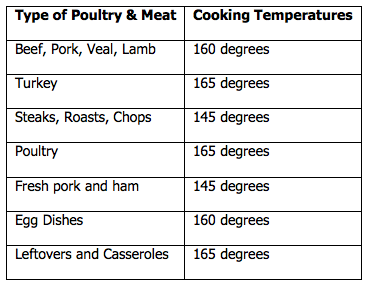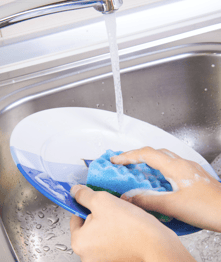4 Tips for Summer Food Safety
Ashley Graven, RD, LD, CPT | Aug 7, 2015
As the heat of the summer months continue to climb, it is important to keep into consideration what we are fueling our bodies with and how safe that food is before consuming it. With summer comes an abundance of in-season fresh produce, barbecues, and picnics. Yum! As these seasonal activities may be pleasing for some foods, other perishable food items have an increased risk of bacterial growth during the warm-temperature months. Follow these four tips this summer to ensure you are feeding your body safe foods, especially in the heat of the Minnesota summer.
1. Beware of the “Danger Zone”
It is important to always take the internal temperature of foods, specifically poultry and meats, to guarantee summer food safety. The “danger zone” refers to a temperature where bacteria rapidly grow - between 35-145 degrees Fahrenheit. Make sure to keep cold refrigerated foods below or at 40 degrees and serve hot foods above 145 degrees. When eating leftovers, the internal temperature should rise to the safe internal temperature for that food, especially with poultry and meat products (see chart below). Purchase a digital thermometer and check your foods prior to serving that way you can ensure that your food is safe for eating.

2. Wash Your Produce
Many varieties of fruits and vegetables are in season during the Minnesota summer months. When eating produce, make sure to thoroughly wash before consuming. Many ask if buying organic is necessary, to this - I refer to the dirty dozen. Choosing to eat organic will help you rid the toxins, herbicides, and pesticides within your foods. See below for a full list of produce to try to buy organic.
- Strawberries | Raspberries | Pears | Peaches | Nectarines | Grapes | Cherries | Apples
- Bell Peppers | Celery | Spinach | Potatoes
 3. Change Up Your Plate
3. Change Up Your Plate
When cooking or preparing foods, always think about what plate you are using for raw versus cooked foods. Changing up your plate or washing the plate between preparing raw and cooked foods is one of the best things you can do to prevent contamination. This also goes for cutting and prepping foods before cooking. Try having different colored cutting boards that are used specifically for the different food groups. This way the juices from the raw meat will not mix with fresh produce.
4. When In Doubt, Throw It Out
When it comes to leftovers and re-eating foods that were already prepared, make sure to properly store and reheat to the appropriate temperatures. With any food leftovers, always reheat to 165 degrees to ensure the safety and decrease potential for developing a food borne illness. This is extra important in the summer months, since temperatures favor bacterial growth. Properly store leftover food in the refrigerator under 40 degrees immediately after eating. As always with leftovers, when in doubt, throw it out.
Practicing food safety is important all year round, however the summer months allow for an increased risk of developing food borne illnesses due to the rise in temperature. By following these simple rules you will be able to know that you are taking care of yourself and others that are consuming the prepared foods. What we put into our bodies is important and we need to take care of our own health, starting with nutrition.

Ashley Graven, RD, LD, CPT
Life Time Fitness
Registered & Licensed Dietitian/Weight Loss Coach
Certified Personal Trainer
